 Right now 35,000 walruses are mobbed together on the Alaskan coast, an unusual occurrence. From the air it looks like a massive walrus protest, with tens of thousands of animals huddled together. Why would walruses pact together in such numbers? The answer, because the ice that they rely on has totally disappeared. Unlike seals (who can swim indefinitely) after a day of hunting, walruses need a place to plant their tusks and rest. Walruses in the Bering Sea usually rest on ice flows, which in the past, have been plentiful in both summer and winter. With rising global temperatures, artic sea ice has diminished, leaving the walruses no choice but to congregate on the Alaskan coast, just north of Point Lay. The melted artic sea ice presents a wide range of problems for the walruses, from access to food, ease of diving, on up to rearing young.
Right now 35,000 walruses are mobbed together on the Alaskan coast, an unusual occurrence. From the air it looks like a massive walrus protest, with tens of thousands of animals huddled together. Why would walruses pact together in such numbers? The answer, because the ice that they rely on has totally disappeared. Unlike seals (who can swim indefinitely) after a day of hunting, walruses need a place to plant their tusks and rest. Walruses in the Bering Sea usually rest on ice flows, which in the past, have been plentiful in both summer and winter. With rising global temperatures, artic sea ice has diminished, leaving the walruses no choice but to congregate on the Alaskan coast, just north of Point Lay. The melted artic sea ice presents a wide range of problems for the walruses, from access to food, ease of diving, on up to rearing young.
This comes at a time when three category four hurricanes touched down in the Pacific Ocean. It’s a strikingly rare meteorological event, and experts blame warmer than average sea temperatures for the massive storms. These hurricanes come on the heels of what has already been a devastating hurricane season. The climate is changing, yet you may be wondering, what in the heck does that have to do with my aquarium?
The symptoms:
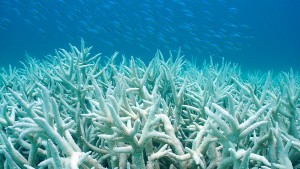 The symptoms of climate change are many, from coral bleaching to ocean acidification. Both are terms that most marine aquarists are somewhat familiar with. The ocean exists as a natural carbon dioxide filter, and much of the excess co2 created by man ends up in the ocean. Scientists have implicated this co2 build-up with warmer water, on down to strange fish behavior. It’s changing the ocean, and species that once were rare, now thrive as they’ve been able to adapt to conditions their predators could not. The octopus and cuttlefish are prime examples, and reefs wiped out by acidification and warming have seen a surge in cuttlefish populations. Like Ian Malcolm said in Jurassic Park, “Life finds a way.”
The symptoms of climate change are many, from coral bleaching to ocean acidification. Both are terms that most marine aquarists are somewhat familiar with. The ocean exists as a natural carbon dioxide filter, and much of the excess co2 created by man ends up in the ocean. Scientists have implicated this co2 build-up with warmer water, on down to strange fish behavior. It’s changing the ocean, and species that once were rare, now thrive as they’ve been able to adapt to conditions their predators could not. The octopus and cuttlefish are prime examples, and reefs wiped out by acidification and warming have seen a surge in cuttlefish populations. Like Ian Malcolm said in Jurassic Park, “Life finds a way.”
Unless you want every coral reef to exist behind glass or acrylic, than climate change matters to you. It’s a conversation starter among marine aquarists, and while some still deny the human cause of climate change, the vast majority of global scientists agree that since the Industrial Revolution, we’ve been altering Earth’s climate and oceans by releasing massive amount of co2.
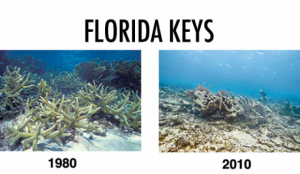 While our aquariums represent a slice of the coral reef, often housing rare, unique and thrilling species – it’s ironic that in reality they are contributing to the release of carbon into the atmosphere, and consequently the ocean. Unless your reef tank is powered by a carbon free energy source (solar, wind, aquatic turbine) then it’s using grid power. If it’s using grid power, it’s highly likely that coal, natural gas or another fossil fuel is generating it. Since coal fired power plants make up the majority of electricity generators in the United States, I will focus on coal power.
While our aquariums represent a slice of the coral reef, often housing rare, unique and thrilling species – it’s ironic that in reality they are contributing to the release of carbon into the atmosphere, and consequently the ocean. Unless your reef tank is powered by a carbon free energy source (solar, wind, aquatic turbine) then it’s using grid power. If it’s using grid power, it’s highly likely that coal, natural gas or another fossil fuel is generating it. Since coal fired power plants make up the majority of electricity generators in the United States, I will focus on coal power.
How electricity is measured?
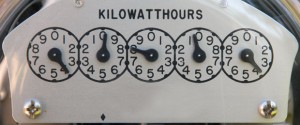 Electricity is measured in a kilowatt hour. This is a measure of electricity consumption equal to power consumption of 1,000 watts for one hour. Energy is described as how much fuel is contained within something, or used over a specific period of time. A kilowatt hour, a calorie and a joule are all measures of energy. There’s also a BTU hour, and many other measures of energy consumption that are used for various purposes.
Electricity is measured in a kilowatt hour. This is a measure of electricity consumption equal to power consumption of 1,000 watts for one hour. Energy is described as how much fuel is contained within something, or used over a specific period of time. A kilowatt hour, a calorie and a joule are all measures of energy. There’s also a BTU hour, and many other measures of energy consumption that are used for various purposes.
How much carbon dioxide is released when consuming power?
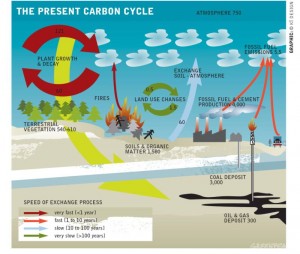 A building may use 550 kilowatt hours of power during warmer months, when air conditioning units are cooling the interior. This would be the equivalent to running 550,000 watts of electricity for one hour. Since it takes 1.05 pounds of coal to generate 1 kilowatt hour of electricity, the building has consumed 577.5 pounds of coal. When we consider that 1 kilowatt hour of coal created electricity releases 2.07 pounds of co2, the building has released 1,138.5 pounds of co2 into Earth’s atmosphere and eventually oceans, per hour. That is just one building out of tens, if not hundreds and hundreds of thousands. This calculates to a nearly immeasurable amount of co2 released only by buildings each year, which is then coupled onto the amount naturally released in Earth’s environment and combined with the amount released from land, air and sea vehicles. While both the atmosphere and ocean are efficient and powerful co2 filters, the massive amount of co2 released by mankind is simply too much for them to bear, and thus the environment is changing as a result.
A building may use 550 kilowatt hours of power during warmer months, when air conditioning units are cooling the interior. This would be the equivalent to running 550,000 watts of electricity for one hour. Since it takes 1.05 pounds of coal to generate 1 kilowatt hour of electricity, the building has consumed 577.5 pounds of coal. When we consider that 1 kilowatt hour of coal created electricity releases 2.07 pounds of co2, the building has released 1,138.5 pounds of co2 into Earth’s atmosphere and eventually oceans, per hour. That is just one building out of tens, if not hundreds and hundreds of thousands. This calculates to a nearly immeasurable amount of co2 released only by buildings each year, which is then coupled onto the amount naturally released in Earth’s environment and combined with the amount released from land, air and sea vehicles. While both the atmosphere and ocean are efficient and powerful co2 filters, the massive amount of co2 released by mankind is simply too much for them to bear, and thus the environment is changing as a result.
Our aquariums, coal and co2:
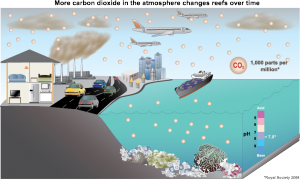 In Maryland we pay about 17-20 cents for one kilowatt hour of electricity. If you’re using grid power to provide electricity to your aquarium, than like it or not, you have a coal powered aquarium. For every 1,000 watts your aquarium consumes, 1.05 pounds of coal is burned and 2.07 pounds of CO2 are released.
In Maryland we pay about 17-20 cents for one kilowatt hour of electricity. If you’re using grid power to provide electricity to your aquarium, than like it or not, you have a coal powered aquarium. For every 1,000 watts your aquarium consumes, 1.05 pounds of coal is burned and 2.07 pounds of CO2 are released.
How much electricity does a typical reef tank consume? Luckily since the advent of LED lighting, the power consumption has dropped quite a bit. Don’t get excited yet though, as this sudden change has also led to far less efficient reef aquariums. A single high output LED lighting array uses about 150 watts of power. I know personally, I have five of them over my reef tank. That means my lighting alone nearly consumes a total kilowatt hour of power, running up 750 watts.
Say you have a circulation pump that advertises 32 watts of power consumption, but is actually using more like 43 watts. Of course in most reef tanks one circulation pump isn’t enough, so you opt for two. Your circulation pumps alone are consuming 86 watts, a relatively small percentage of a kilowatt hour.
A 1,300 gallon per hour (gph) return pump uses about 105 watts of power. Again, a small percentage of kilowatt hour, but when combined with circulation pumps we are at 191 watts. A protein skimmer pump uses a similar amount of power, perhaps around 125 watts. We continue to climb closer to another kilowatt hour of power consumption, totaling 316. Let’s say the aquarium has three reactors, a phosphate reactor, zeolite reactor and nitrate reactor. Each pump uses about 100 watts of power. Now we are at 616 watts of total consumption.
Don’t forget your heaters, it’s not uncommon for an aquarium of moderate size to have up to 400 watts of heating, bringing our total outside of lighting to an excess of a second kilowatt hour with 1,016 watts of power consumption. Without dosing pumps, over-sized equipment, quarantine tanks or any other aquariums, a moderate sized reef aquarium consumes on average 1,766 watts of power, nearly two kilowatts hours of power every hour it’s running all needed equipment. That’s roughly 2.1 pounds of coal burned per hour and 4.14 pounds of co2 released into the atmosphere and ocean, per hour. And this is a very modest estimate, as many of us have multiple tanks and massive reefs. Imagine the co2 release per hour from an aquarium in excess of 10,000 or 20,000 gallons – easily capable of matching a small building’s 550 kilowatt hours of power consumption. It can easily be argued that while reef aquariums represent reef environments, they are at the same time destroying them as they eat through pound upon pound of coal each hour.
What can be done?
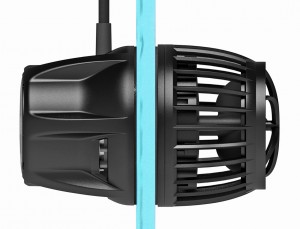 The building industry is experiencing a renaissance right now. For years we have been able to provide comfortable homes with materials that last in excess of 30 years. The focus has shifted, to efficiently providing heating and cooling, while air sealing a home to make sure that conditioned air doesn’t escape. You’ve likely heard of heat pumps, which are units that use ambient warm or cool air to provide heating and cooling. Geothermal heating uses the Earth’s natural temperature of 55 degrees F to heat or cool homes, and solar/propane hybrid water heaters limit the amount of grid power needed to heat water. The aquarium industry needs to experience a similar renaissance, we know we can create stable and successful captive aquariums, we need to do so efficiently.
The building industry is experiencing a renaissance right now. For years we have been able to provide comfortable homes with materials that last in excess of 30 years. The focus has shifted, to efficiently providing heating and cooling, while air sealing a home to make sure that conditioned air doesn’t escape. You’ve likely heard of heat pumps, which are units that use ambient warm or cool air to provide heating and cooling. Geothermal heating uses the Earth’s natural temperature of 55 degrees F to heat or cool homes, and solar/propane hybrid water heaters limit the amount of grid power needed to heat water. The aquarium industry needs to experience a similar renaissance, we know we can create stable and successful captive aquariums, we need to do so efficiently.
Metal halide lighting of yesteryear created a tremendous amount of heat, so much in fact it overheated aquarium water. This forced aquarists to implement chillers, cooling fans and a wide variety of tools to cool overheating water. It also gave rise to equipment such as the Ecotech vortech, which mounted a pump motor outside the tank, transferring heat into the surrounding room rather than the water.
All this changed with LED lighting. While 5 high output LED fixtures consume a whopping 750 watts of power, replaced with 400 watt metal halides they would consume 2,000 watts – a total of two kilowatt hours. Lighting alone would consume 2.1 pounds of coal per hour, nearly as much as an entire modern day reef. Power consumption and heat creation dropped. While we were using a lot of electricity to chill our tanks in the metal halide days, today we are using electricity to keep our tanks warm. As I noted above, a moderate sized reef aquarium can have up to 400 watts of heating power, yet equipment meant to move water or skim waste also generates heat.
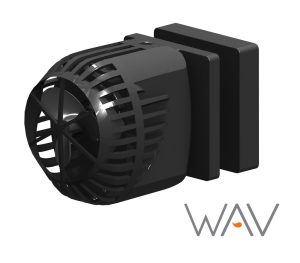 What I am suggesting, since we are beyond the days of hot metal halide lighting, is putting equipment back in the water. While a return pump, circulation pump and reactor pump don’t generate a lot of heat on their own, working together they can greatly limit the amount of electricity required from our heaters. In fact, with careful design and planning a reef aquarium may be possible without the need for heaters at all, or only to maintain a stable temperature from time to time. That’s up to 400 watts or more of savings, nearly half of one kilowatt hour. Not only does this create a long term monetary savings, sometimes in excess of $ 100 per year – it also cuts coal consumption by at least a half a pound per hour, and a total pound of CO2 released into the air per hour, adding up to impressive savings over the year.
What I am suggesting, since we are beyond the days of hot metal halide lighting, is putting equipment back in the water. While a return pump, circulation pump and reactor pump don’t generate a lot of heat on their own, working together they can greatly limit the amount of electricity required from our heaters. In fact, with careful design and planning a reef aquarium may be possible without the need for heaters at all, or only to maintain a stable temperature from time to time. That’s up to 400 watts or more of savings, nearly half of one kilowatt hour. Not only does this create a long term monetary savings, sometimes in excess of $ 100 per year – it also cuts coal consumption by at least a half a pound per hour, and a total pound of CO2 released into the air per hour, adding up to impressive savings over the year.
A requirement to continue:
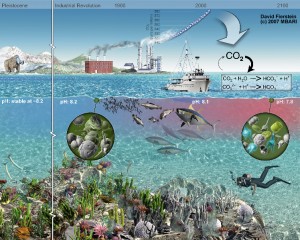
Illustration of the effects of increasing carbon dioxide in the ocean.
The burning of fossil fuels for energy production, manufacturing, and transportation has driven the level of carbon dioxide in the atmosphere to levels 30% greater than prior to the industrial revolution. Higher atmospheric levels of carbon dioxide have resulted in increasing amounts of carbon dioxide dissolving in the ocean.
As shown in the chemical formulas in this illustration, when carbon dioxide (CO2) dissolves in seawater, it creates carbonic acid, which releases bicarbonate ions (HCO3-) and hydrogen (H+) ions into the water. The hydrogen ions make the seawater more acidic (lowering its pH). In addition, some of the hydrogen ions react with carbonate ions (CO3=) already in the seawater to create more bicarbonate. This reduces the amount of carbonate dissolved in the seawater.
Increasing the acidity (lowering the pH) of the oceans could have a variety of direct effects on marine organisms. Many of these effects are poorly understood at present. However, the pH of the oceans has already dropped lower than it has been since the beginning of the Pleistocene (about 1.8 million years ago).
Lower carbonate ion concentrations in the ocean make it more difficult for marine organisms such as corals to build shells from calcium carbonate. Some types of microscopic marine algae also use calcium carbonate to build their shells. Thus, reducing the amount of carbonate in the ocean may make these algae less abundant. These algae serve as the basis for some ocean food webs that support important fisheries. Thus, increasing ocean acidity could affect not only coral reefs, but also the amount of fish available for human consumption.
It’s much more fun to select livestock and design aquascape, than it is to meticulously calculate how much power (and thus coal) your tank is using. It certainly is a drag to realize that your reef aquarium may have a hand in altering Earth’s climate, and thus making life hard (or impossible) for oceanic animals. Perhaps for some, it sucks even more to think of the sheer amount of wasted dollars spent on power that was utterly useless.
Though it seems like aquarists can fit into one of four categories. Some are so wealthy that power consumption from a monetary or environmental standpoint doesn’t matter. Others aren’t so concerned with the money, but are worried about the effect on the environment. Other aquarists aren’t worried about the environment, but are quite cautious about anything’s effect on the wallet, and some of us are mindful of both. As the building industry is learning, often efficiency in the design and long-term operation of products and systems is good for both. It works with physical laws to both sustain our environment and our finances. Anything that does that is usually good news for everyone. The reality is, if we are to continue having marine aquariums (or perhaps even inhabiting this Earth) people from all continents and walks of life will need to carefully evaluate their co2 consumption, and do what is possible to limit it.

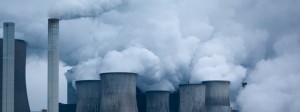









I’m in Illinois, mine is nuclear powered it’s the safest best power available.